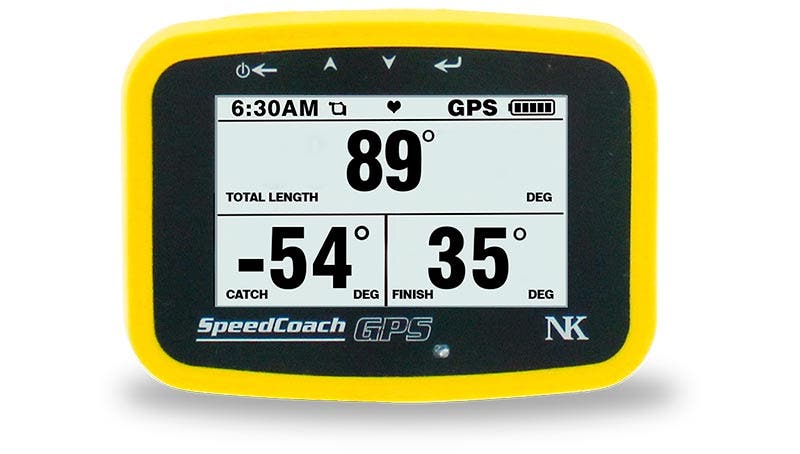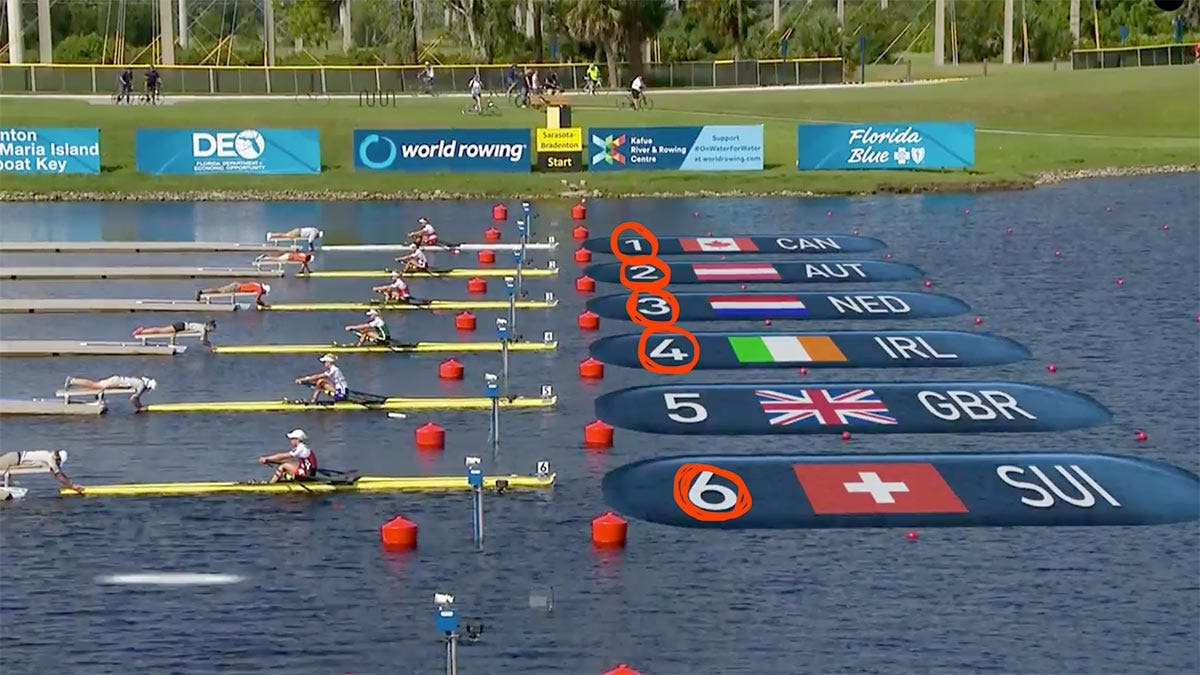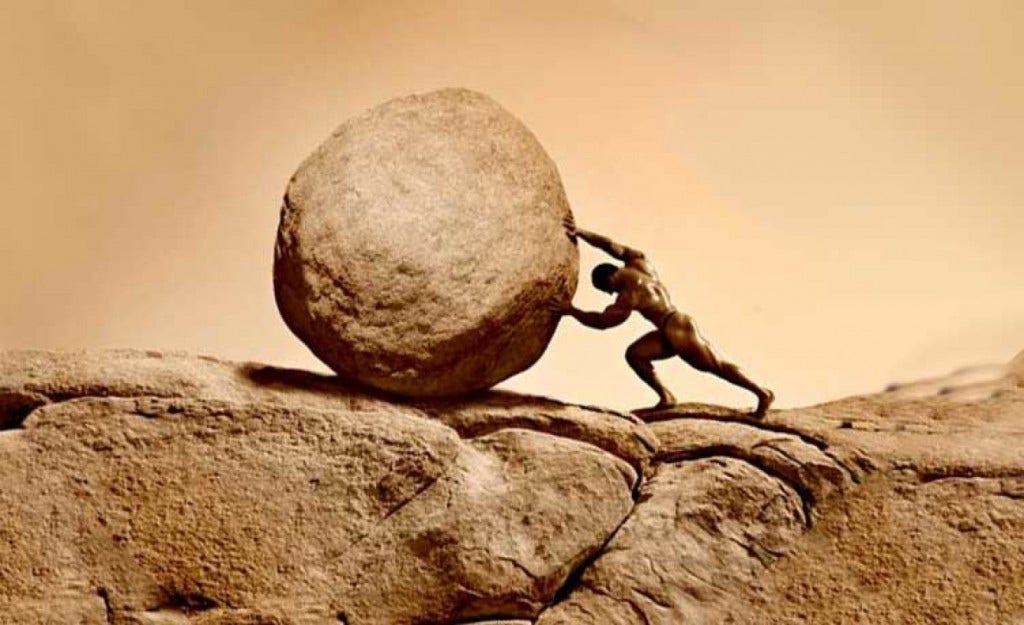Got a need for speed and savings? Take 15% off the SpeedCoach for a limited time!
We Put EmPower Oarlocks in a Collegiate 8+ for One Hour and This is What Happened

The 8+ beat its previous time by nearly a boat length over 2,000 meters. Same stroke length, same rating, same power. Here’s how:
There are two particularly low-hanging fruits for the EmPower Oarlock: catch angles and finish angles. We know intuitively that the better matched the rowers are at the catch and finish in a team boat, the more efficient the stroke. The problem is that it's nearly impossible for the human eye to detect small differences--less than five degrees or so--between the oars, especially when the oars are in constant motion.

 Above: Screenshot of the Men’s 8+ final in the 2016 Rio Olympics. In the original photo (top) the catch angles in the German boat look well-matched, but if we extend the lines from the oars (bottom), we can see that they are actually 2-3 degrees different from one another.
Above: Screenshot of the Men’s 8+ final in the 2016 Rio Olympics. In the original photo (top) the catch angles in the German boat look well-matched, but if we extend the lines from the oars (bottom), we can see that they are actually 2-3 degrees different from one another.
Michael Naughton, Product Manager at NK, went out with the Drexel University Men’s Crew team for some on-the-water testing of the new Oarlocks. To set a baseline, he asked the crew to simply row for about 10 minutes, ignoring the data from the Oarlocks displayed on the SpeedCoach in front of each rower. After their second piece, Michael asked them to quickly go through some of their data and read off their catch and finish angles. He wrote them down and came up with a rough average for the boat.
Here are the raw numbers:

Michael and Head Coach Paul Savell settled on a target catch angle of -55 and a target finish angle of +35. Those seemed like reasonable numbers for all the athletes to hit, since no one was off by more than 4 degrees at the catch and 6 degrees at the finish. (For more information about target catch and finish angles click here).
Athletes were instructed to move their foot stretchers or make minor technique adjustments to get closer to the target average for the boat.
After another mile, the athletes reported their numbers again. Without coaching, simply relying on the real-time simple numerical feedback from their SpeedCoach displays, six athletes nailed the target catch angle and the other two were only one degree off. The finish angles were better as well:
 Catch and finish angles of the Drexel Varsity 8+ after adjustments made according to feedback from the EmPower Oarlock: the maximum difference between the rowers' oar angles was decreased by two degrees both at the catch and at the finish.
Catch and finish angles of the Drexel Varsity 8+ after adjustments made according to feedback from the EmPower Oarlock: the maximum difference between the rowers' oar angles was decreased by two degrees both at the catch and at the finish.
Before getting off the water, the athletes also reported to Naughton and Savell information about power and average split to see how much of an effect, if any, their technical changes had made to boat speed over the course of the three pieces. Power remained the same, so the athletes weren’t rowing any harder (about 300 watts), and they already had the angle data showing that their strokes weren’t any longer, but average split increased by 0.5 seconds /500m over the entire piece. This translates two seconds over 2,000 meters, or roughly two thirds of a boat length. Simply matching up catch and finish angles better can make a significant difference in the outcome of a race, and can be accomplished without a complete technique overhaul.
Watch this video to learn how you can make your crew faster, too







